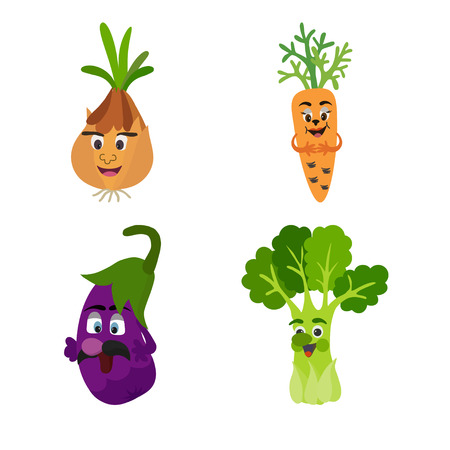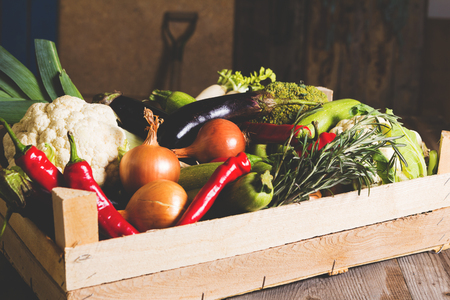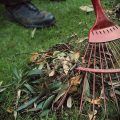1. Understanding Fall Planting Basics
Fall might not be the first season that comes to mind when you think about planting vegetables and fruits, but it’s actually one of the best times to grow a variety of crops. Cooler temperatures, fewer pests, and consistent moisture levels create ideal growing conditions for many plants. To make the most out of your fall garden, its important to understand a few key factors: soil temperature, daylight hours, and frost dates—especially based on your USDA Hardiness Zone.
Soil Temperature
Unlike air temperature, soil retains warmth longer into the fall. This is great news for root development. Most fall crops germinate best when soil temperatures are between 50°F and 75°F. Using a soil thermometer can help you decide the right time to plant your seeds or seedlings.
Daylight Hours
As summer ends, days get shorter, which means less sunlight for growing plants. Since most vegetables need at least 6 hours of direct sun daily, it’s important to plant early enough in the season so your crops mature before daylight becomes too limited.
Know Your Frost Dates
One of the most critical things to know is your area’s average first frost date. This will help you count backward from that date to determine when to sow seeds or transplant seedlings. Here’s a quick reference table with average first frost dates across different USDA Hardiness Zones:
| USDA Zone | Average First Frost Date |
|---|---|
| Zone 3 | September 8 – September 15 |
| Zone 4 | September 21 – October 7 |
| Zone 5 | October 13 – October 21 |
| Zone 6 | October 17 – October 31 |
| Zone 7 | October 29 – November 15 |
| Zone 8 | November 7 – November 28 |
| Zone 9 | November 25 – December 13 |
| Zone 10+ | No regular frost dates |
Tip:
If youre not sure what zone youre in, use the USDA Plant Hardiness Zone Map online by entering your ZIP code.
Taking Advantage of Fall Conditions
The cooler weather also means fewer bugs and diseases to deal with, giving your crops a better chance at thriving. Plus, vegetables grown in fall—like carrots and kale—often taste sweeter after exposure to light frosts because they convert starches into sugars as a natural defense mechanism.
Quick Checklist for Fall Planting Success:
- Check your USDA Hardiness Zone and frost dates.
- Monitor soil temperature before planting.
- Select fast-maturing or cold-hardy varieties.
- Plan for sufficient sunlight during shorter days.
- Add mulch to retain moisture and regulate soil temperature.
- Consider using row covers or cold frames for extra protection.
Understanding these basics sets you up for a productive and rewarding fall garden. In the next section, we’ll dive into the top vegetables and fruits that thrive in these ideal autumn conditions.
Top Cool-Season Vegetables for Fall Gardens
Fall is the perfect time to grow cool-season vegetables that thrive in crisp, mild weather. These crops not only handle lower temperatures well, but many also become sweeter after a light frost. Below is a curated list of some of the best vegetables to plant in late summer or early fall for a rewarding autumn harvest. We’ve also included planting tips and timing to help you get the most out of your garden.
Kale
Kale is a cold-hardy leafy green that actually improves in flavor after a frost. It’s easy to grow and packed with nutrients, making it a favorite among fall gardeners.
Planting Tips:
- When to Plant: 6–8 weeks before your first expected frost date
- Spacing: 12–18 inches apart
- Soil Needs: Well-draining soil rich in organic matter
Carrots
Carrots are root vegetables that love cool weather. As temperatures drop, they develop a sweeter taste, making them ideal for fall harvests.
Planting Tips:
- When to Plant: 10–12 weeks before your first frost date
- Spacing: Thin to 2 inches apart after sprouting
- Soil Needs: Loose, sandy soil free from rocks for straight roots
Brussels Sprouts
This slow-growing veggie is worth the wait. Brussels sprouts flourish in cooler temperatures and are sweetest when harvested after a light frost.
Planting Tips:
- When to Plant: Start seeds indoors in midsummer; transplant outdoors about 4 months before first frost
- Spacing: 18–24 inches apart
- Soil Needs: Rich, firm soil with consistent moisture
Lettuce
Lettuce grows quickly and prefers cooler temperatures, making it an excellent choice for succession planting throughout the fall season.
Planting Tips:
- When to Plant: Every two weeks starting about 8 weeks before first frost date
- Spacing: Thin seedlings to 6–12 inches apart depending on variety
- Soil Needs: Moist, well-drained soil enriched with compost
Spinach
A tough leafy green that thrives in chilly weather, spinach can even overwinter in some regions with mulch protection.
Planting Tips:
- When to Plant: About 6 weeks before the first expected frost date
- Spacing: Thin seedlings to about 4–6 inches apart
- Soil Needs: Fertile, well-drained soil with good moisture retention
Quick Reference Table: Cool-Season Vegetables for Fall Planting
| Vegetable | Sow Time (Before First Frost) | Mature Spacing | Main Growing Tip |
|---|---|---|---|
| Kale | 6–8 weeks | 12–18 inches | Tolerates frost and becomes sweeter after cold snaps. |
| Carrots | 10–12 weeks | 2 inches (after thinning) | Sow directly into loose, rock-free soil. |
| Brussels Sprouts | 16+ weeks (start indoors) | 18–24 inches | Matures slowly; frost improves flavor. |
| Lettuce | 8+ weeks (succession planting) | 6–12 inches depending on type | Mature quickly; protect from heat spikes. |
| Spinach | 6 weeks | 4–6 inches (after thinning) | Loves cool temps; mulch helps extend season. |
Selecting the right vegetables and timing your planting just right will set your fall garden up for success. These cool-weather crops are reliable performers as summer fades and sweater weather arrives. In the next section, we’ll explore fruit-bearing plants perfect for harvesting during fall.

3. Best Fruits to Plant or Prepare for Fall Harvest
When planning your fall garden, don’t overlook fruits. While many fruits are harvested in summer, several varieties thrive in late summer and early fall or can be planted to prepare for future seasons. Some fruit trees and vines are perennials, making them a smart long-term investment for your home garden.
Late-Season Fruit Varieties
Certain fruits ripen just in time for fall harvest. These include apples, figs, and grapes—each offering unique flavors and nutritional benefits. Here are some great options to consider:
| Fruit | Recommended Variety | Harvest Time | Planting Tips |
|---|---|---|---|
| Apple | Granny Smith, Fuji, Honeycrisp (late-season) | September to October | Choose dwarf or semi-dwarf trees for smaller spaces; full sun is essential. |
| Fig | Chicago Hardy, Brown Turkey | August to early October (depending on zone) | Plant in containers if winters are harsh; needs well-drained soil. |
| Grape | Concord, Reliance, Thomcord | Late August to September | Train vines on a trellis; full sun and airflow help prevent mildew. |
Perennial Fruits: Planning Ahead
If you’re thinking beyond just this season, fall is an excellent time to plant perennial fruit crops. These plants take time to establish but will reward you with fruit year after year. Blueberries, raspberries, and even dwarf fruit trees can be planted in fall in many parts of the U.S., giving their roots time to settle before winter.
Top Perennial Fruits to Consider This Fall:
- Blueberries: Prefer acidic soil; plant two varieties for better pollination.
- Raspberries: Choose everbearing types for extended harvests.
- Pears: Hardy and reliable; need at least two trees for cross-pollination.
Quick Tip:
If youre in USDA Zones 7–10, fall is a great time to plant citrus trees like Meyer lemons and satsumas. In colder zones, consider container planting so you can bring them indoors during frost.
4. Soil Preparation and Fertilization Tips
Getting your soil ready before fall planting is one of the best ways to ensure a successful harvest. Whether youre growing leafy greens like kale and spinach or root veggies like carrots and beets, healthy soil sets the foundation for strong root development and nutrient-rich crops. Here are some easy-to-follow tips to enrich your soil before putting those fall veggies and fruits in the ground.
Composting: Natures Best Fertilizer
Compost adds valuable organic matter to your soil, improving its structure, water retention, and microbial life. A well-balanced compost should contain a mix of green materials (like vegetable scraps and grass clippings) and brown materials (like dried leaves and straw). Mix it into your garden beds about 2-4 weeks before planting to give it time to break down and integrate with existing soil.
Mulching for Moisture and Weed Control
Applying mulch helps keep the soil moist, reduces weed growth, and slowly adds nutrients as it breaks down. Use organic mulches such as shredded leaves, straw, or grass clippings. For fall gardens, aim for a 2-3 inch layer around your plants but keep it slightly away from plant stems to prevent rot.
Organic Soil Amendments for Fall Crops
To give your fall vegetables and fruits an extra boost, consider using natural amendments that cater to their specific needs. Heres a quick guide:
| Amendment | Benefits | Best For |
|---|---|---|
| Composted Manure | High in nitrogen; promotes leafy growth | Kale, Lettuce, Spinach |
| Bone Meal | Rich in phosphorus; supports root development | Carrots, Beets, Turnips |
| Kelp Meal | Packed with micronutrients; boosts overall plant health | Cabbage, Broccoli, Cauliflower |
| Wood Ash (in moderation) | Adds potassium; helps with fruit production | Pumpkins, Squash, Tomatoes (if planting late-season varieties) |
Soil Testing: Know What You Need
If youre unsure what your soil is lacking, a simple soil test can provide insight into pH levels and nutrient deficiencies. Many local extension offices or garden centers offer affordable testing kits. Once you know what your soil needs, you can tailor your amendments more effectively.
Tilling vs. No-Till for Fall Gardens
Tilling can help incorporate compost and amendments more evenly into the soil but may disrupt beneficial microbes if overdone. Alternatively, no-till gardening preserves soil structure and biodiversity—just layer compost and mulch on top of existing beds. Choose the method that works best for your space and gardening style.
With just a bit of prep work now, youll be setting yourself up for a thriving fall garden full of flavorful vegetables and fruits.
5. Extending the Harvest with Season Extension Tools
As fall temperatures start to dip, it doesnt mean your harvest has to end. Many of the top 15 vegetables and fruits for a bountiful fall harvest—like kale, carrots, spinach, and broccoli—can keep growing even as the days get shorter. With the help of season extension tools, you can protect these crops from early frost and continue enjoying fresh produce well into early winter.
Why Use Season Extension Tools?
Season extension tools act like mini-greenhouses, trapping heat and shielding plants from cold weather. They’re especially useful in USDA Hardiness Zones 4 through 7, where early frosts can arrive as soon as late September or October.
Popular Tools for Extending Your Fall Harvest
| Tool | Description | Best For |
|---|---|---|
| Cold Frames | A simple box with a transparent lid that traps heat from the sun. | Lettuce, spinach, radishes, herbs |
| Row Covers | Lightweight fabric that lays directly over plants or is supported by hoops. | Kale, chard, broccoli, cabbage |
| Hoop Houses (Low Tunnels) | Semi-permanent structures made from PVC or metal hoops covered with plastic. | Carrots, beets, turnips, leafy greens |
Tips for Using These Tools Effectively
- Ventilation Matters: On sunny fall days, lift covers slightly to prevent overheating.
- Secure Edges: Make sure row covers and cold frames are anchored well to withstand wind.
- Monitor Soil Moisture: Even as temperatures drop, your plants still need consistent watering.
- Add Mulch: A layer of straw or shredded leaves helps insulate soil under your covers.
Perfect Matches: Crops That Thrive with Protection
Certain vegetables from our top 15 list are particularly suited for season extension methods. Heres how they pair up:
| Crops | Recommended Tool | Notes |
|---|---|---|
| Kale & Spinach | Row Covers or Cold Frames | Tolerates light frost; covers boost growth speed. |
| Carrots & Beets | Hoop Houses or Deep Mulch + Row Cover | Sweeter flavor after frost; keep roots insulated. |
| Lettuce & Radishes | Cold Frames or Low Tunnels | Mature quickly; great for second plantings in fall. |
| Cabbage & Broccoli | Row Covers + Mulch | Protects against pests and light freezes alike. |
Enjoy Fresh Food Longer
With just a bit of planning and the right protection tools, your fall garden doesn’t have to stop producing when the first frost hits. Whether youre growing leafy greens or root vegetables from our top 15 list, using cold frames, row covers, or hoop houses can make all the difference. Keep your harvest going strong—even when there’s a chill in the air!


